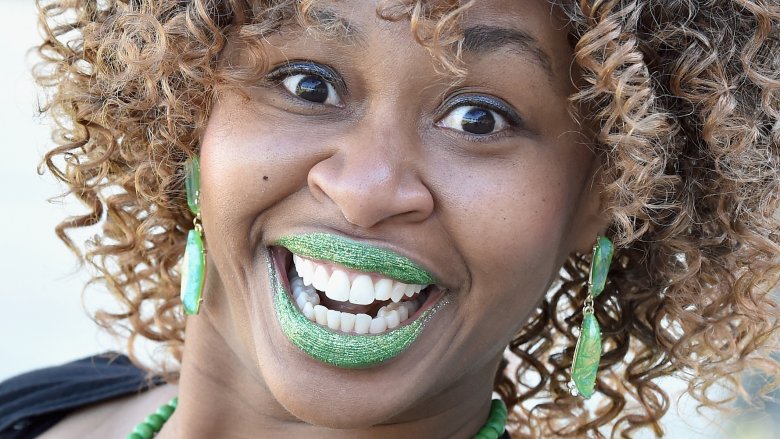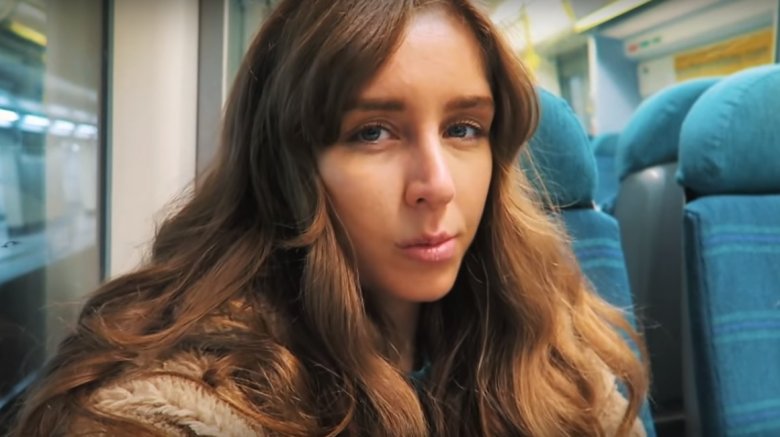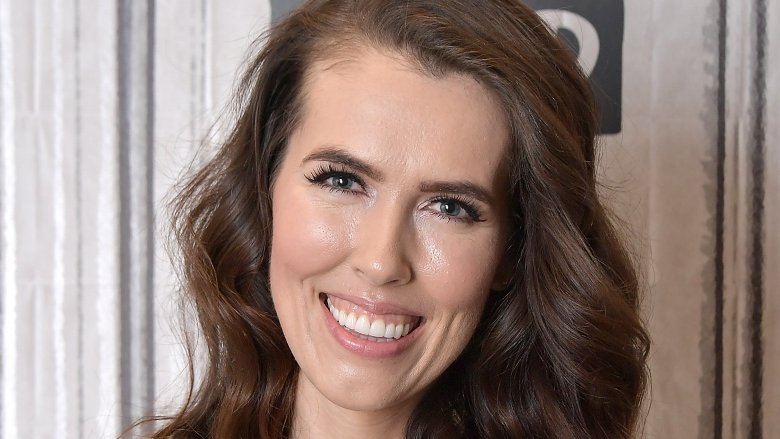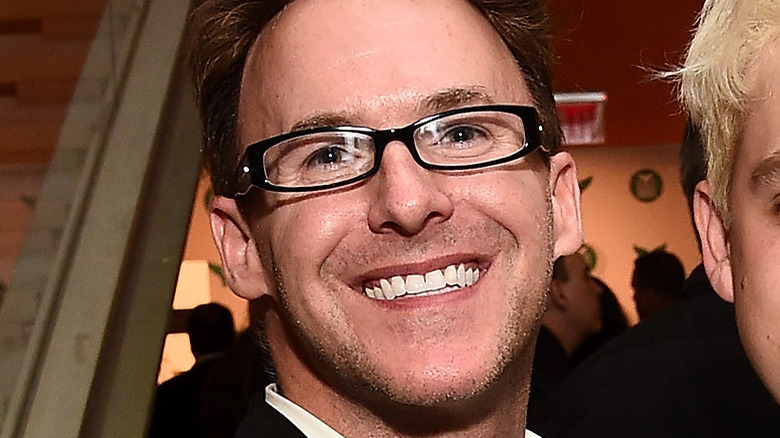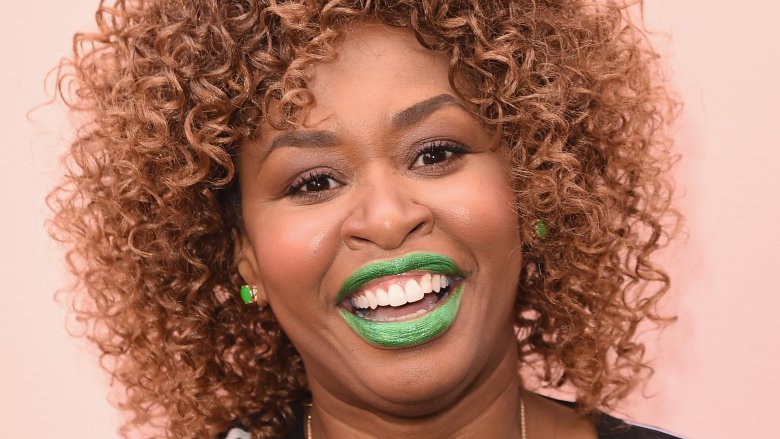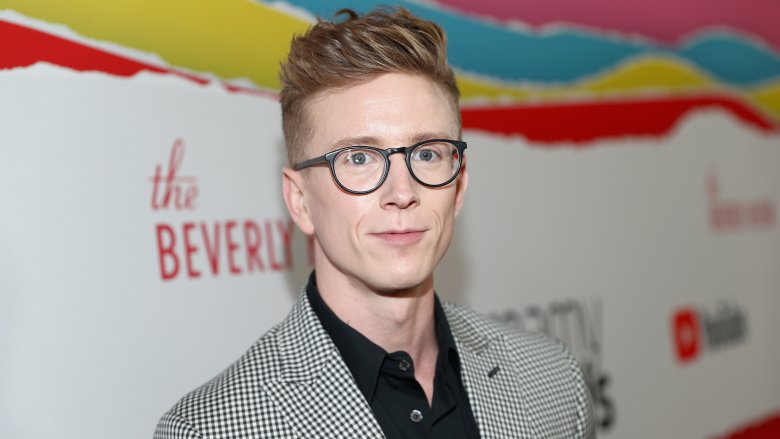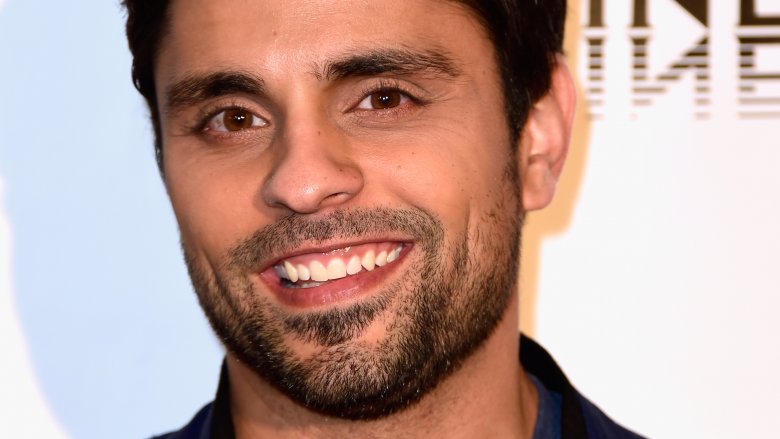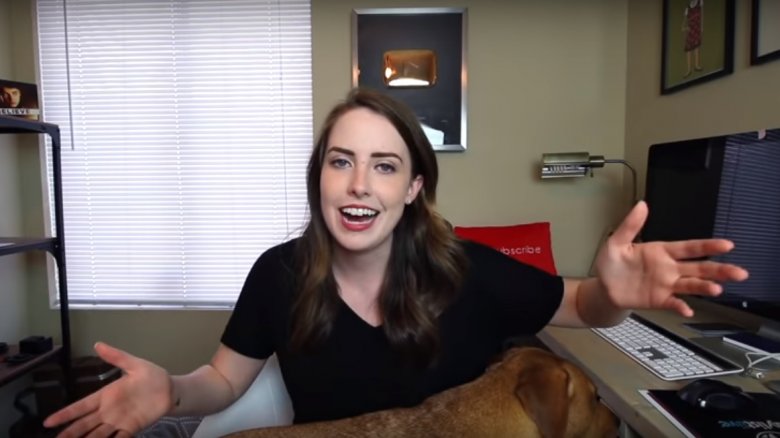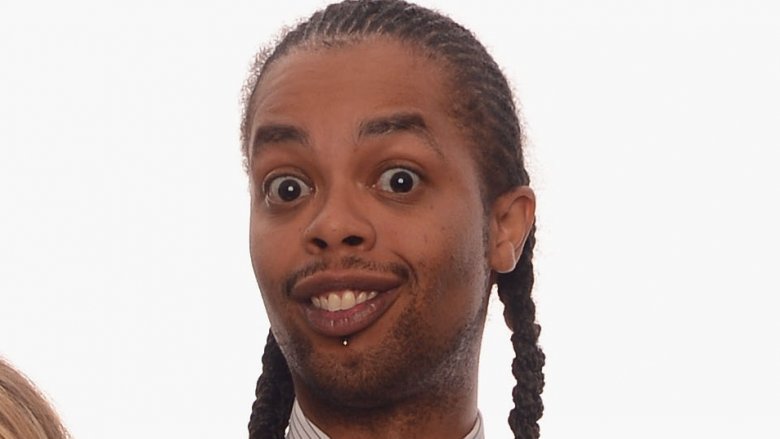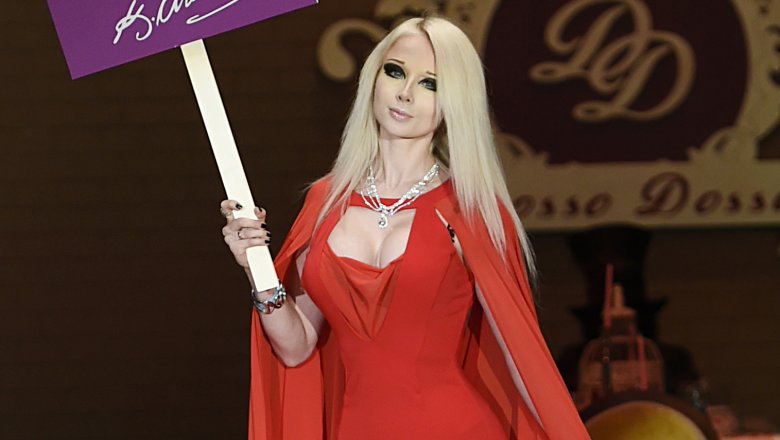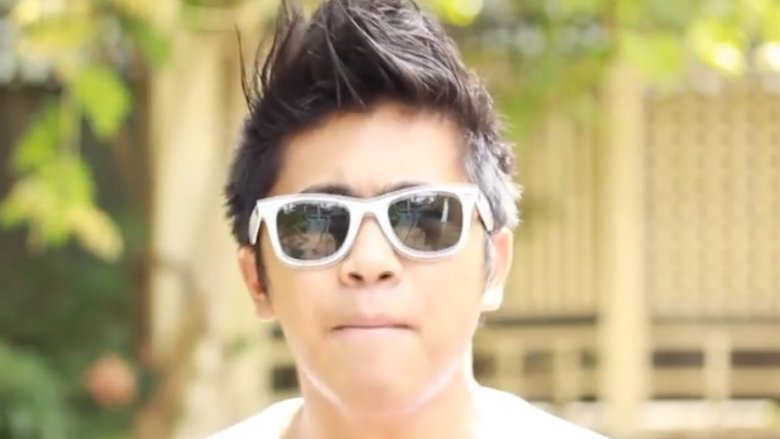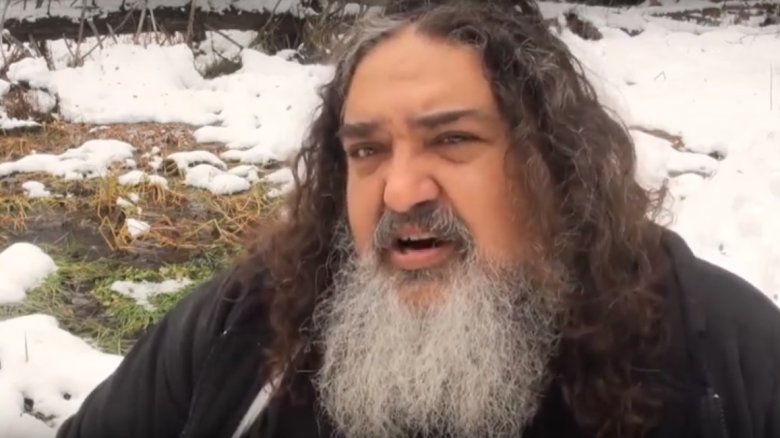YouTube Stars Who Haven't Figured Out They Aren't Famous Anymore
YouTube might not have changed that much in terms of aesthetics since it first began hosting videos in 2005, but the days when anyone with a camera and a wacky idea could launch a successful channel are long gone. Within the last few years, wholesale changes have arrived. Alterations to the platform algorithms left some top creators furious in 2016; the infamous YouTube Adpocalypse arrived in 2017; and an overhaul of the monetization rules was introduced in 2018, hitting the smallest creators the hardest. In short, making a name for yourself on YouTube is more difficult now than it's ever been before, and staying on top is just as tricky.
Still, while it's tempting for creators to blame all of their problems on YouTube, there are a number of other obstacles you need to overcome if you want to keep a big channel alive and well. As social media trends change and online attitudes evolve, YouTubers must adapt or run the risk of falling by the wayside. The latter was the fate of the creators we're about to discuss. Some failed to properly cash in on their exposure; others simply fell out of touch. Whatever the case, the YouTube stars on this list are, sadly, no longer as relevant as they once were — yet their continued efforts on the site seem to suggest they haven't figured that out yet.
Esmée Denters
Dutch-born singer songwriter Esmée Denters seemed destined to become another YouTube pop sensation, but unlike the Justin Biebers and the Carly Rae Jepsens of this world, she failed to properly capitalize on the buzz she created. After her cover of Justin Timberlake's "What Goes Around" went viral in 2007 (the video even featured background vocals and a surprise appearance by JT), she won a record deal with Timberlake's label, Tennman.
Alas, it wasn't to last. The "Cry Me A River" crooner dropped Denters in 2012 after just one album. "I went from a really glamorous world, travelling and opening for Justin Timberlake and Ne-Yo, to being back in my mum's house in Holland and thinking: 'Oh my God, what shall I do?'" Denters told The Sun. "At first I got angry, because I was confused, but then you start looking at yourself and have to try and be better."
Refusing to give up on her dream, Denters appeared as a contestant on The Voice UK in 2015 (she was working as a waitress in London at the time), winning a place on Will.I.Am's team. Despite her obvious talent, the Dutch songstress was eliminated from The Voice in the knockout stages. She's still covering music on her YouTube channel, but rarely do her videos exceed 10,000 views of late.
Brittani Louise Taylor
Music video parodies have been generating more revenue than official music videos since 2014, and one of the first YouTubers to make bank from this kind of content was Brittani Louise Taylor. Her comical covers made her a YouTube star in the early 2010s, but by the midpoint of the decade, her days of enjoying millions of views were over. Taylor gave birth in 2016, and her channel underwent a drastic overhaul.
She became all about mommy vlogging, making topics such as baby teeth and 5-minute makeup her new M.O. The views just weren't the same, however, and her remaining fans began to wonder what happened. When Taylor eventually answered that question, many subscribers were shocked. As 2018 drew to a close, she released A Sucky Love Story, a book that detailed how she discovered that the father of her son wasn't who he claimed to be. "He was already married, before we even started dating, acquiring a green card from a wealthy Russian who called Beverly Hills home," Taylor alleged in the shocking memoir (via Thought Catalog).
She might not be YouTube famous anymore (she rarely reaches six-figure views today), but we're happy to see her looking a lot happier in her vlogs now that she's been able to share her story. "I went from having the hardest four years of my life — including my relationship — to having the best two weeks of my life," she said, following the book's release.
Michael Buckley
Michael Buckley became one of the biggest names on YouTube via the What The Buck Show, which blended LGBTQ themes with pop culture and celebrity gossip. The show was absolutely huge for a number of years, but Buckley decided to press pause in 2016, citing his age as the issue. "I'm just not as into pop culture as I used to be," he said in a video titled "The End." "I'm 41 years old. The jig is kinda up." In truth, the problem arguably wasn't Buckley's age. It was the decade-old show itself. "Buckley attracted more than one million subscribers to his primary YouTube channel," TubeFilter reported at the time. "In recent years, however, the format employed by What The Buck (which is filmed in simple fashion in front of a green screen) became increasingly outdated."
Buckley moved to a different channel, but only a fraction of his subscribers moved with him. He was struggling to exceed a thousand views on his videos as 2018 came to an end, so in January 2019, Buckley closed the side channel. He's now using his BuckHollywood channel, though the video announcing his grand return didn't exactly blow up. As it stands, this YouTuber may need a viral miracle to get back to the big leagues.
GloZell Green
How is it that a YouTuber who interviewed the president of the United States in 2015 has managed to fall completely off the radar in the years since? GloZell Green shot to YouTube prominence in 2012, with her extreme challenge videos, taking part in any crazy fad that happened to come along. Her version of the "Hot Pepper Challenge" became the most watched on the platform, and her attempt at the "Cinnamon Challenge" also went viral. The latter video has been watched more than 54 million times, which make the views that she's pulling in nowadays all the more shocking.
Green's interview with former president Barack Obama was heavily criticized by the media, with many outlets wondering why POTUS was chatting with a woman who ate cereal from her bathtub (via The Washington Times). It didn't help that Green called Michelle Obama the "First Wife" during the interview. Her viewership has suffered ever since, though the two aren't necessarily linked. According to Green's fellow vlogger The Gamer From Mars, her downfall began when she stopped being as wacky in her videos. "In just a few years her channel views have dropped by over 90 percent, even though she hasn't stopped making content," he said, pointing out how Green struggles to break the 10,000 view barrier despite still having in excess of 5 million subscribers. "Even for dead channel standards, hers are notably bad."
Tyler Oakley
Tyler Oakley's rise to YouTube prominence was nothing short of monumental. He uploaded his first video in September 2007, and by February 2008, he'd been made an official YouTube partner, meaning he's been getting paid for his videos for more than a decade now. Oakley became as well-known for his LGBTQ advocacy as he was for his vlogs, and as his reputation grew, he started to rub elbows with celebrities and politicians alike. This might have been lifting his public profile, but his mainstream collabs weren't going down well with his YouTube audience.
Hillary Clinton appeared on one of his vlogs during her run for the White House, but less than a million people watched it. Oakley made a platform-spanning deal with talk show host Ellen DeGeneres in 2016, which was "widely perceived as a gold standard in what social influencers and digital-native talent could achieve in Hollywood," according to The Wrap. Unfortunately for Oakley, the deal didn't pan out as planned, and DeGeneres pulled the plug. According to iNabber, it was around this time that things started to go downhill for Oakley.
"This is a common, recurring pattern on a lot of dead YouTube channels," iNabber said in 2018. "These YouTubers start to interact with celebrities, and just in general famous people, and it really makes them leave the whole stratosphere of YouTube." Oakley posted a video titled "Making 2019 MY B****" in January 2019, but very few of his 7.6 million subscribers seemed to care.
Ray William Johnson
Ray William Johnson is best known as the creator of Equals Three, once the most popular show on YouTube. Millions of subscribers looked forward to his weekly take on the latest viral videos, and his channel (which he dropped out of law school to concentrate on) became the benchmark for this kind of content. Today, the Equals Three program is no more, and Johnson is no longer a high-ranking member of the YouTube community. How did this happen?
According to Techie Gamers, Johnson was doomed the moment he joined a pre-Disney Maker Studios because "Maker Studios didn't care too much about the content they uploaded, they [just] wanted to capture enough views to receive a return on their investment." Johnson ditched Maker, but he didn't come away from the debacle smelling like roses. He continued to make content after stepping away from Equals Three, though his numbers were a fraction of what they once were. The Gamer From Mars declared his channel dead in 2017, but Johnson clearly didn't get the memo.
In 2018, Johnson announced that he was going to start making music, and in the months that followed, he began releasing rap songs under the moniker Fat Damon. His tracks haven't exactly blown up on YouTube. Johnson still has more than 9 million subscribers, but his most-viewed Fat Damon song to date ("Fred Astaire") has only managed a shade more than 315,000 views. Time to rap this up?
Laina Morris
Laina Morris shot to YouTube prominence in 2012, when she recorded her own version of Justin Bieber's "Boyfriend" as part of a competition the Canadian pop star held to promote his new fragrance. "I made a parody from the perspective of an overly clingy girlfriend and made a creepy face at the beginning of the video," Morris told Metro in 2018. "Someone took a screenshot of the face from the video, turned it into a meme they called the 'Overly Attached Girlfriend,' posted it to Reddit and it went viral from there."
Morris released another song parody to capitalize on her sudden exposure, this time covering Carly Rae Jepsen's "Call Me Maybe" in the OAG character. It became her most popular video, but the buzz was relatively short-lived. The last time she scored more than a million views was back in 2013, when she parodied "The Cup Song." Morris tried to introduce new characters to keep her channel fresh, but nothing has proven as popular.
She still has more than a million subs, but Morris has had trouble creating content. When she returned with a vlog in August 2018, after a year break from her channel, Morris admitted that she'd tried to record videos on multiple occasions but never got round to posting them. Like so many formerly big YouTubers, she appears to be struggling to produce new content, yet unwilling to walk away.
Antoine Dodson
Unlike most YouTubers, Antoine Dodson didn't start out chasing stardom. The Alabama resident became internet famous when he overshadowed what was actually a really serious story (the alleged attempted rape of his sister by a home invader) with his animated interview on the local news. The interview itself has logged views in excess of 69 million, though what really made Dodson a legendary meme was the auto-tune remix by schmoyoho, which has been viewed a staggering 142 million times and counting.
"When that video went viral, it totally changed my life," the accidental star told VladTV. Dodson tried to launch a career in music on the back of his newfound fame, but his RnB channel didn't take off the way he'd hoped. He disappeared from YouTube in January 2017, after his short vlogs about Donald Trump failed to garner much attention, but almost two years to the day, Dodson returned to the platform with a freestyle rap called "I'm baaccck B***h N***a."
In the lyrics, Dodson explains that he was taking time off to raise his kid and was ready to get back into the game. He still has more than 94,000 subscribers, yet his aforementioned comeback rap has only been viewed about 1,000 times to date. Sadly, like countless internet fads before him, Dodson just isn't relevant anymore, though YouTube vet Amy Noonan (formerly of Karmin; now known as Qveen Herby) has proven that a comeback is possible if the music is good enough.
Valeria Lukyanova
Otherwise known as the human Barbie doll, Ukrainian YouTuber Valeria Lukyanova became a hot topic in 2013, when she denied that she'd undergone plastic surgery to achieve her desired look. The petite blonde was criticized for her highly manufactured appearance, with detractors claiming she was a bad role model for young female viewers. When asked how many times she'd gone under the knife by New Media Rockstars, Lukyanova admitted to having undergone a breast enlargement procedure, but attributed everything else about her body to "sports massages, healthy living and professional makeup." Lukyanova was also the subject of a surreal Vice documentary that same year, in which she claims she is "not a real girl at all, but a time-traveling spiritual guru whose purpose is to save the world from the clutches of superficiality and negative energy."
Interest in Lukyanova was already waning when she was cast as a murderous escort in the obscure 2016 B-movie slasher The Doll, which did little to boost her profile in the States. Her makeup tutorials used to stack up millions of views, but nowadays, it's a big deal if she gets 20,000 hits.
Peter Chao
Chinese-Canadian comic Davin Tong (known to the YouTube community as Peter Chao) was a big deal in the early 2010s, regularly scoring huge viewer numbers with his stereotypical Chinese character. His pyrobooby channel was suspended on several occasions due to racially insensitive content, yet he gained the level of subscribers that seemingly renders one more or less bulletproof. In 2012, Tong did an interview with New Media Rockstars in full Chao character and basically dared YouTube to come after him.
"Every time I say something offensive, all I would have to do is just say, 'Hey, I am a big deal now. Don't mess with me. All you have to do, unflag my s**t right away,' you know?" In the years that followed he was reportedly featured in commercials for Campbell's Soup and Pizza Hut and even had a few minor film and TV appearances.
Despite his notoriety, Tong's star has dimmed. He still manages to break the 100,000 hits barrier on occasion, but people are seemingly tired of the crazy immigrant schtick, and it isn't uncommon for his videos to end up with less than 10,000 views. For a guy who made more than 50 videos with more than a million views, this is a sure sign that he's just not that famous anymore.
Paul Vasquez
Before the internet made him famous, Paul Vasquez had a short stint as a mixed martial artist, calling it quits in 2005 with a record of one fight, one loss. Five years later, he posted a random little video to YouTube that became known as "Double Rainbow," and his 15 minutes of fame began. Vasquez's enthusiastic reaction to a stunning double rainbow in Yosemite National Park went viral after Jimmy Kimmel referred to it as "the funniest video in the world" in a tweet.
Vasquez milked the exposure, appearing in a 2011 Smart Water commercial with Jennifer Aniston and giving permission for his famous video to be played in the opening moments of the 2013 comedy, We're the Millers. He's been active on YouTube since, but like all viral fads, folks gradually lost interest, and the dedicated vlogger just hasn't managed to attract anything near the 45 million views that "Double Rainbow" clocked. In fact, he's lucky if he gets 100 views today.
In January 2019, Vasquez celebrated the ninth birthday of "Double Rainbow" with a special live stream event, but nobody turned out for the live chat. The usually chirpy YouTuber began the new year on a somber note, admitting that pain caused by his weight had prompted suicidal thoughts. Thankfully, his remaining subscribers were there to comfort him in the comments section, and we're happy to report that Vasquez is still putting out videos on the regular.
If you or someone you know is having suicidal thoughts, please call or chat online with the National Suicide Prevention Lifeline at 1-800-273-TALK (8255).

